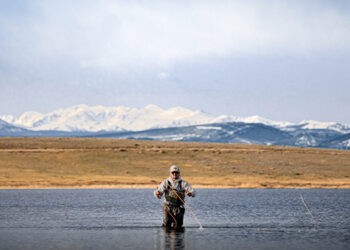Considering how versatile, durable, easy-to-maintain and environmentally friendly it is, rubber flooring has become an increasingly popular choice for recreation centers.
It comes in an array of colors, styles and types, which is great, but it’s helpful to have a cheat sheet when you’re selecting rubber flooring for your venue. Here are options to factor into your decision:
The three most common types of rubber flooring are mats, tiles and rolls.
Mats come in an array of different sizes, starting as small as 3 feet by 6 feet — so they’re versatile and easy to install. They also come in a range of thicknesses, from 1/4 inch — appropriate for home use — up to 2 inches — for gyms and professional sports facilities.
Tiles typically come in 12, 18 or 36-inch squares, and they can be trimmed to fit any room or to create custom patterns. Tiles are often manufactured with interlocking edges for easy installation without adhesives. Tiles for high-traffic areas or outdoor use are also available in glue-down forms. Tiles typically range in thickness from 2 millimeters to 5 inches. One of their advantages is individual pieces can be easily replaced.
Rolls provide flooring sheets that can be 4 feet wide or wider, and up to 50 feet long. Rolls have fewer seams, but installation is a little more involved, so they’re often used in larger workout areas, event centers and large common areas.
There are options for textures and finishes.
During manufacturing, rubber flooring can be textured, which creates depth and character in the venue where it’s installed. Among the options are rivets, dimples or studs, as well as more intricate waffles and diamond-plate textures.
The standard finish for rubber flooring is a subtle matte finish, suitable for most athletic installations. For a higher-impact impression, venues can also choose brighter colors, which are attained by polishing the rubber floor with a water-soluble wax emulsion. This gives the surface a great shine and makes the floor more durable and stain resistant.
Have your checklist ready.
Finally, it’s a good idea to know exactly where it will be installed and how it will be used. A vendor can help you select the right options if you can answer questions like these: What activities will it be used for? Will it be indoors or outdoors? How many years do you want the flooring to last? How many people will be using the facility? How will you maintain the flooring? Do you have unusual needs for sound absorption, shock absorption, traction or slip resistance?
Talking to recreation center managers who have installed rubber flooring and visiting other facilities — or seeing installation photos — can also help you make the best decision for your recreation center.
Latasha Pittman is the director of marketing and communications at Mondo, which makes a full line of vulcanized rubber flooring. For more information on vulcanized rubber flooring for campus recreation centers, visit mondoworldwide.com/na/en/or call 800.361.3747.










